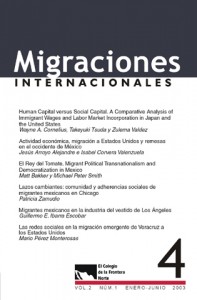
Este ensayo analiza la participación de la fuerza de trabajo inmigrante mexicana en la manufactura del vestido de Los Ángeles. Se estudia su composición por sexo, estado de origen, perfil socioeconómico, inserción laboral y salarios. El análisis de los datos de una encuesta aplicada en el distrito manufacturero de esta ciudad, llamado Fashion District, en el 2000 muestra cambios importantes en esta población. En primer lugar, se percibe el predominio de mexicanos indocumentados de reciente arribo con un nivel bajo de capital humano. En segundo, se observa una creciente masculinización de la fuerza de trabajo, mediante la sustitución de mujeres por hombres jóvenes y de estados de origen diferentes a los de la región tradicional de migración en México. Finalmente, se encontró que la operación de redes de solidaridad entre los trabajadores mexicanos posibilita su inserción en el mercado de trabajo pero en condiciones cada vez más precarias. ABSTRACTThe participation of the Mexican immigrant workforce in garment manufacture in Los Angeles is considered in terms of its sex, state of origin, socioeconomic profile, labor insertion, and wages. Analysis of data from a 2000 survey taken in the city’s manufacturing district, now renamed the Fashion District, shows significant changes in this population. First, the majority appears to be recently arrived, undocumented Mexicans, with little human capital. Second, there is an increasing masculinization of the workforce, with women being replaced by young men from states in Mexico that are not in the traditional sending region. Finally, the study found that solidarity networks operating among the Mexican workers make possible their insertion in the labor market but under conditions that are increasingly precarious.
